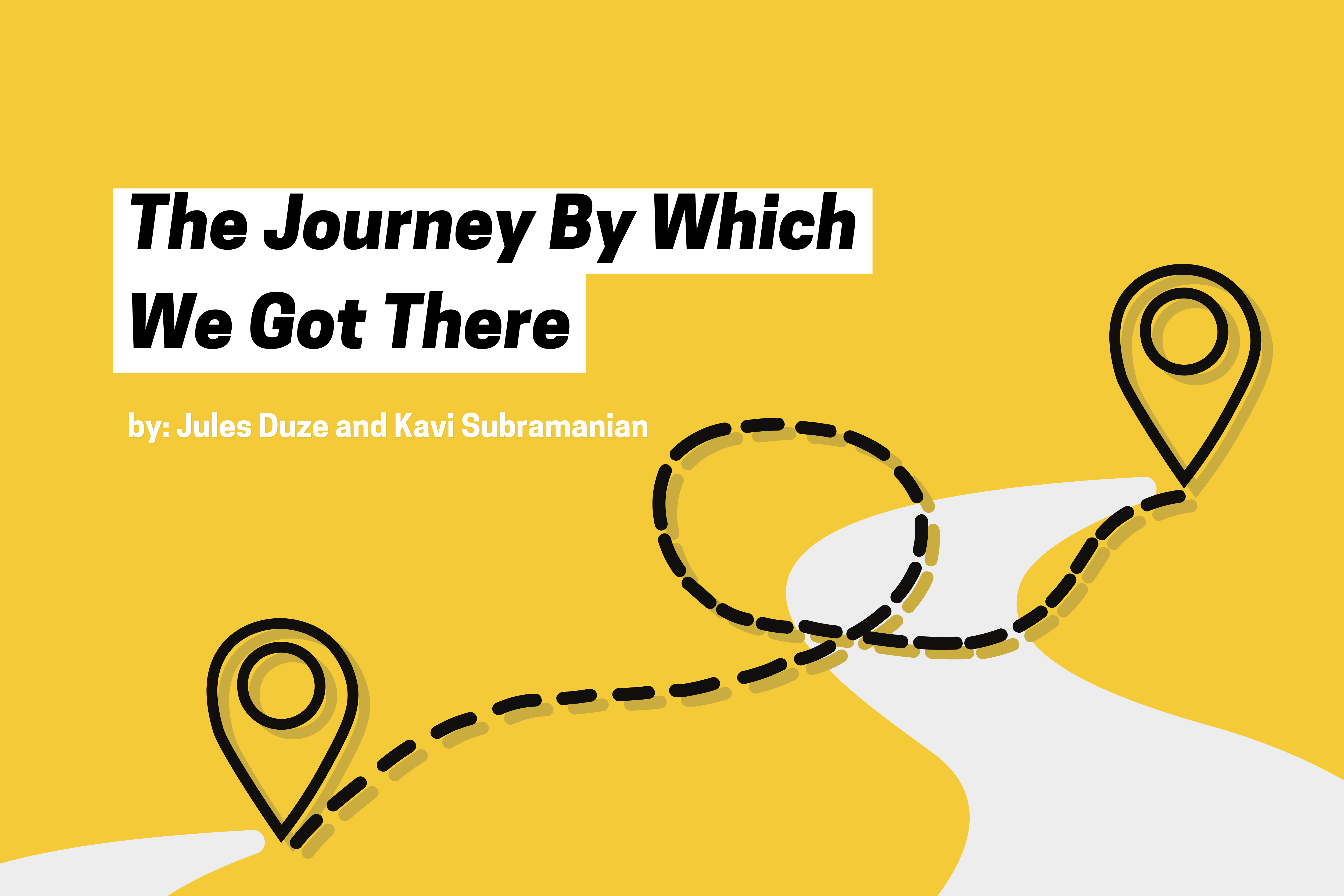
By: Jules Duze and Kavi Subramanian
We’re hesitant to tell you how wonderful everyone we’ve met in the Fellowship is. Not because they are not wonderful (we think they are) but because their wonderfulness is probably more of a lucky coincidence than an immutable part of this experience. What is, on the other hand, more immutable, is the distinctive dynamic of being in a community of people that share the tangled and ambivalent identity of ‘Jew of Color.’
For a lot of us, it was an unfamiliar experience to be in a space that was explicitly Jewish and explicitly non-white. We don’t need to explain how closely aligned whiteness and Judaism are in mainstream perception, and in the experience of so many Jews. Each of us had, at one point or another, found ourselves in a Jewish space dominated by whiteness, and some of us had never been part of a community of predominantly non-white Jews. When whiteness is normative, a person of color is always wearing their race. Oftentimes, this manifests in a pressure to flatten or hollow out your identity so you don’t stick out so much; other times, it takes the form of an impulse to let your identity saturate and define you—a sort of tokenization or essentialism. Whatever it is, your Judaism, your self-hood in general, is always qualified when whiteness is normative. You always have a prefix: Black, Asian, mixed, adopted, etc.
And so, by contrast, community among the Fellows has a different dynamic, in which one does not have to start from the place of explaining oneself or justifying one’s existence. Instead, we can focus on really knowing and supporting each other.
The advantages of this special environment are supplemented by the extremely nurturing structure of the Fellowship. Every week, we spend time talking about our goals, challenges, and experiences. We speak to and learn from various figures in the Jewish non-profit sphere, lead our own projects and tasks, and think explicitly about professional life, identity, and the inevitable intersection between the two. Really focusing on, understanding, and growing ourselves is an immense privilege and truly unique opportunity. Doing this alongside other JoC accomplices has allowed us to collaborate, so we get the very most out of this experience.
Beyond the professional and personal development as a cohort, more time is spent at our fieldwork placements, to which the aforementioned positive environment extends. The two of us had the fortune of being matched with the same organization for the first five months of the Fellowship: The Jewish Community Center of Harlem (JCCH).
JCCH is both an institution and a physical space. In addition to being an institution, it is a literal space that we inhabited every day. It has a core staff of only four people. Because of this, we got to know the community center in a very deep way. We learned all the hidden nooks and quirks of the building. We saw how it was situated in the neighborhood and the community of locals who frequented our programs. Perhaps most importantly, we formed truly organic bonds with all of the people with whom we worked every day.
At the same time, we both needed time to get our bearings. We were placed at JCCH because the diversity of our interests matched the diversity of JCCH’s work. That also meant a lack of predetermined structure at the beginning. At JCCH, intensity tends to come in little floods interspersed by periods of calm preparation. It can be difficult to just jump waist-deep into these floods if you’re not sufficiently immersed during the nascent stages. Helping out with Thanksgiving preparation was, for example, quite meaningful and didactic, but it had been so long in the making that most of the structural aspects were already set.
Moving into the spring season of programming, knowing the lay of the land, we both recognized the need to take initiative—to make something new. There was no set structure to the spring projects, which meant we got to create our own steps, timelines, and even basic program conception. The staff at JCCH were tremendously supportive. At every point during planning, multiple people guided us through all the unfamiliar steps and reassured us of our progress.
Jules’ final project was cultivated in Harlem with the nurturing guidance of all their mentors at the Jewish Community Center. They were afforded the opportunity to synthesize their passions and aspirations for their professional career which led to the creation and their participation with a Trans and Gender Variant panel discussion, which featured three prominent community members. Through this process, they were faced with different obstacles and chances to learn more about themselves and the specifically Jewish non-profit sector, including actionable skills which will allow them to produce other events in the future. It was not only beyond their wildest dreams to make this event a reality, but it revitalized their hope in what was possible within the Jewish ecosystem.
At the end of this, we each completed projects of which we were pretty proud; perhaps as important, though, was the journey by which we got there.


